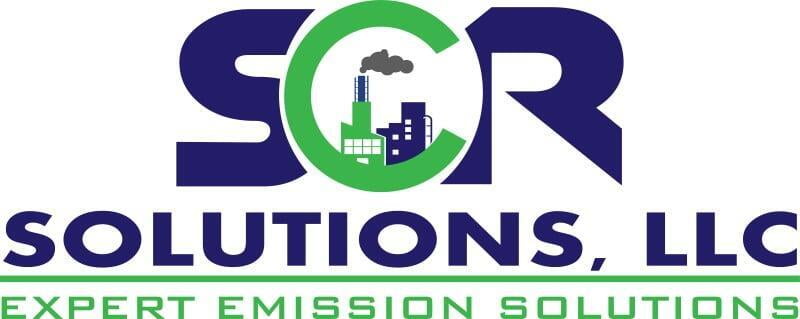Please note that this article was originally published in the Combined Cycle Journal.
Source: https://www.ccj-online.com/improve-nh3-distribution-to-reduce-nox-and-ammonia-slip/
Improve NH3/NOx distribution to reduce NOx and ammonia slip
Bill Gretta, Principal, SCR Solutions LLC, presented two case studies at a recent HRSG Forum virtual session. A unique field test method combined with sophisticated CFD analysis produced modifications for improving distribution of ammonia through the SCR catalyst to improve NOx reduction and reduce ammonia slip.
Old units, and many new ones, are not equipped with a permanent NOx sampling grid downstream of the SCR, and it’s costly to add, Gretta said. He described a method that makes use of a flexible weighted probe which is lowered into the SCR inlet and outlet through multiple ports on the HRSG roof (photo). The roof ports are usually there anyway (sky climber ports) or they are simple to add. The method provides NOx, O2, temperature, CO and ammonia slip (at the SCR outlet) using FTIR, EPA Test Method 320. Multiple data points are acquired and provide a detailed map of the distribution. Subsequent CFD analysis can reveal the reasons for areas of high and low NOx and ammonia concentrations after the ammonia injection grid (AIG), and how to make improvements.
In the first case study, a 2 × 1 501F-powered 500MW combined cycle plant used this testing/CFD approach. The results required removing and rebuilding the AIG, locating it three feet further upstream closer to the CO catalyst and adding mixing baffles. The ammonia-NOx distribution (NH3/NOx) RMS (root mean square), an indication of the quality of distribution, was dramatically reduced from 70% to 6%. Buildup of ammonium bisulfate in the downstream tube banks was decreased dramatically. Ammonia consumption was also decreased.
In the second case study, a 1 × 1 501D-powered combined cycle installed more than 25 years ago had to meet a lower emissions profile, so a dual-function catalyst was selected, but failed to meet the new standards. Analysis showed there was plenty of catalyst, so other system issues were at play.
Gretta and his team again performed the top traverse method sampling 50 data points in a 5 × 10 array of SCR inlet and outlet locations with the weighted probe. Results showed poor NH3/NOx distribution (>20% RMS). A subsequent inspection and CFD modeling were performed and resulted in a new AIG to be added. SCR catalyst seals were also modified. Post-retrofit NH3/NOx distribution was reduced to 6% RMS and the unit was well within NOx and ammonia slip compliance.
Insights gleaned from the Q&A included the following:
- In both case studies, AIG heavy support elements (which Gretta said probably would be found only in early SCRs) were getting in the way of flow; the replacement was designed to be self-supporting to eliminate the old support structures.
- The top traverse test method is simple and does not require any special preparation or outage.
- Rust and scale were also blocking the AIG ports. The new AIG uses stainless steel instead of carbon-steel pipe and includes cleaning and vacuuming ports in each lance. Hole diameters also were increased and rearranged.

